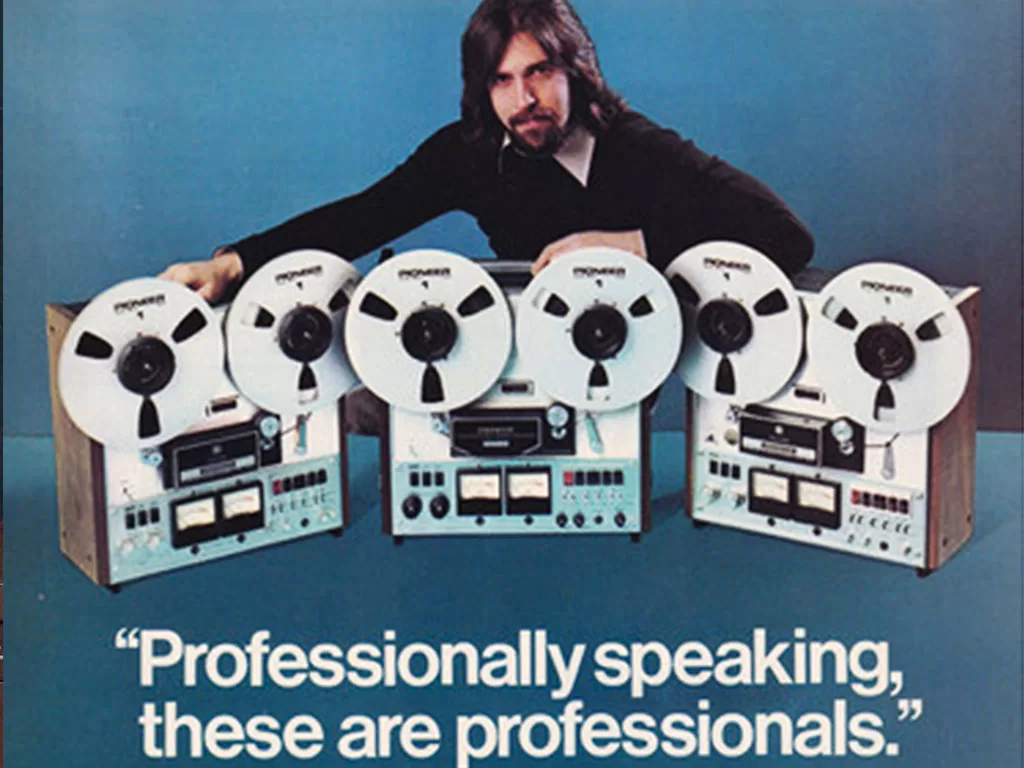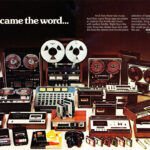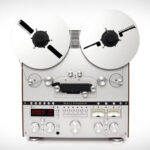Welcome to our exploration of the fascinating world of reel-to-reel history. The use of magnetic tape for audio recording dates back to the 1920s, but it wasn’t until the 1940s that reel-to-reel tape recorders were introduced to the world. These early recorders were primarily used by radio stations and in professional recording studios, but it wasn’t long before the technology became more widely available to consumers.
Reel-to-reel tape recorders quickly became a popular way for people to record and play back music in their homes. The technology continued to evolve throughout the 1950s and 1960s, with new features being added and improvements being made to the quality of the recordings.
The impact of reel-to-reel technology on the music industry cannot be overstated. It allowed for more precise editing and overdubbing, making it possible to create complex multitrack recordings. It also gave artists and producers more control over the recording process, leading to new and innovative sounds that were not possible with previous recording technologies.
Today, reel-to-reel technology may not be as widely used as it once was, but it remains a beloved part of audio history and a favorite of audiophiles around the world. Join us as we delve deeper into the history and evolution of this groundbreaking technology.
The Birth of Reel-to-Reel Tape Recorders
In the early 1900s, magnetic tape was developed as a means of recording sound. It wasn’t until the late 1940s, however, that reel-to-reel tape recorders became commercially available. The technology quickly gained popularity among audiophiles and professionals due to its superior sound quality compared to other recording methods of the time. One of the pioneers of reel-to-reel tape recorders was German company AEG, which introduced its Magnetophon K1 in 1935. The device used tape coated with a magnetic powder and was capable of recording and playing back audio with greater clarity and fidelity than previous methods. After World War II, several companies began producing reel-to-reel tape recorders for home and professional use. The most popular brands during this era were Ampex, Studer, and Sony.The Types of Reel-to-Reel Tape Recorders
At the time, there were two main types of reel-to-reel tape recorders: open reel and cassette. Open reel machines used large spools of tape that had to be manually threaded through the machine. They were typically used in professional recording studios and for live recordings. Cassette recorders, on the other hand, used smaller tapes that were enclosed in a plastic case. They were more compact and portable than their open reel counterparts, making them popular for home use and personal recordings. Despite their differences, both types of reel-to-reel tape recorders were highly sought-after for their superior sound quality and durability.“The technology quickly gained popularity among audiophiles and professionals due to its superior sound quality compared to other recording methods of the time.”
The Legacy of Reel-to-Reel Tape Recorders
Although reel-to-reel tape recorders eventually gave way to newer technologies such as cassette tapes and digital recording, they continue to hold a place in the hearts of audiophiles and music enthusiasts. Many consider reel-to-reel tapes to be the pinnacle of analog sound, and vintage machines and tapes remain highly sought-after by collectors. In recent years, there has been a resurgence of interest in reel-to-reel tape recording, particularly among musicians looking for a more authentic and organic sound. Some companies have even begun producing new machines and tapes to keep up with the demand. Overall, the birth of reel-to-reel tape recorders revolutionized the audio recording industry and left a lasting legacy that still resonates with music lovers today.The Evolution of Reel-to-Reel Tape Machines
As reel-to-reel tape recorders became more popular, manufacturers began to experiment with new features and capabilities. This led to the introduction of many different types of reel-to-reel tape machines, each with its own unique set of features and advantages. Some of the most significant developments in the evolution of reel-to-reel tape machines include:Multitrack Recording
One of the most important developments in the history of reel-to-reel tape recording technology was the introduction of multitrack recording. This technology allowed musicians and producers to record each instrument or vocal track on a separate tape track, which could then be mixed together in post-production. Multitrack recording greatly expanded the creative possibilities of recording music and is still widely used in modern recording studios.Stereo Recording
In the early years of reel-to-reel recording, most machines only allowed for monaural (single channel) recording. However, as technology improved, manufacturers began to introduce stereo recording capabilities. This allowed for a more immersive listening experience and is now the standard for most music recordings.Portable Tape Machines
As reel-to-reel tape recorders became more compact and affordable, they also became more portable. This allowed for field recordings and other types of recordings that were previously impossible. Portable tape machines were particularly popular among journalists and radio broadcasters, who could now easily record interviews and live events on location. Overall, the evolution of reel-to-reel tape machines played a key role in the development of modern recording technology. From the introduction of multitrack recording and stereo sound to the rise of portable tape machines, these technologies helped shape the way we listen to and create music.Key Moments in Reel-to-Reel History
Reel-to-reel tape recording technology has had a long and varied history, with many important moments and breakthroughs along the way.The Introduction of Stereo Recording
One of the most significant moments in reel-to-reel tape history was the introduction of stereo recording in the early 1960s. Prior to this, most recordings were done in mono, which meant that the sound was all channeled through a single speaker. With stereo recording, sound could be separated into two channels, creating a more immersive listening experience.The Rise of Home Recording
In the 1960s and 70s, reel-to-reel tape machines became popular among amateur and home recording enthusiasts. This was thanks to the introduction of affordable, consumer-oriented tape recorders that allowed people to make high-quality recordings in their own homes.The Emergence of Multitrack Recording
In the 1960s and 70s, multitrack recording became a revolutionary technique in the world of professional music production. Essentially, it allowed for the recording of multiple tracks of audio that could be mixed together later on. This meant that musicians could record individual parts separately, giving them more creative control over the final product.The Arrival of Digital Audio Recording
In the 1980s, digital audio recording technology began to supersede analog reel-to-reel tape recording. While this marked the end of an era for reel-to-reel tape, it also paved the way for new digital technologies that have revolutionized the way we record and produce music.The Resurgence of Reel-to-Reel Tape
In recent years, reel-to-reel tape technology has experienced a resurgence in popularity among audiophiles and music enthusiasts. This is thanks to the unique warmth and character that analog tape recordings can bring to music, as well as the overall nostalgic appeal of the format.The Evolution of Reel-to-Reel Tape Machines
Reel-to-reel tape machines have come a long way since their inception in the mid-20th century. As the technology evolved, so did the capabilities of tape machines. In the early days of reel-to-reel tape, machines were relatively simple and lacked many of the features that we take for granted today. However, as demand for better audio quality grew, so did the need for more advanced tape machines.Types of Tape Players
Over time, a number of different types of reel-to-reel tape players became available. These included tabletop models, portable models, and high-end professional machines used in recording studios. Tabletop models were typically designed for home use and were often sold as part of a larger stereo system. Portable models were smaller and designed for on-the-go use. These were popular with journalists, musicians, and other professionals who needed to record audio while on the move. Professional machines, on the other hand, were designed for use in recording studios and were capable of producing high-quality audio recordingsNew Features and Capabilities
As the technology behind reel-to-reel tape machines evolved, so did their capabilities. Some of the key new features that were introduced over time include:- Noise reduction technologies that helped to reduce hiss and other unwanted background noise
- Playback speed controls that allowed users to adjust the speed of playback and create special effects
- Multi-track recording capabilities that allowed for the layering of multiple audio tracks
- Stereo sound recording capabilities that allowed for the creation of a more realistic sound environment


















